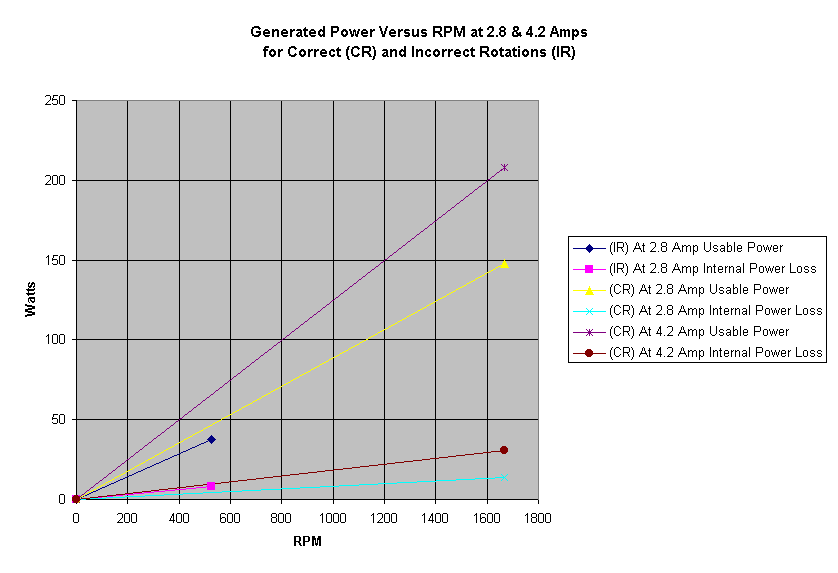
| |
 |
![]()

The above chart gives the generated power versus RPM for typical amperage produced.
If a reverse polarity direction is chosen one can expect more power loss. Rotation in the
opposite direction from what the motor was designed for causes brush noise (I found it
harder to measure correct voltage with a digital meter) and more internal power loss. At
higher amperage we have again more internal power loss and a new curve showing this.
The usable power one can expect at about 500 RPM (charging one 12-Volt battery) is
about 40-60 watts depending on the current (2.8 to 4.2 amps). The usable power at about
1800-RPM (to optimally charge at 48 volts or 4 batteries in series) is about 150-210
watts depending on the current (2.8 to 4.2 amps). This allows for charging at about 14
volts for each 12-volt battery.
After running continuously at an average of 3.6 amps for 42 minutes the 1/3 hp drive
motor got hotter than the test DC motor-generator which measured 52 degrees
Centigrade. The test motor-generator was sealed and had no forced airflow around the
armature. It had to heat up the internal air and the air then would heat the aluminum and
steel casing. If one were to drill holes in it for forced air cooling it could be used at a bit
higher amps. Some of these units can be purchased with forced air cooling holes. See
"Air Vent" column in the table above.
The lower the current used the longer the brushes will last. Assuming forced air-cooling,
just a guess at this time, but I would plan on running continuously at less than 4 amps.
Under non-continuous operation one may be able to go to 8 amps occasionally.
Offered by Mike.